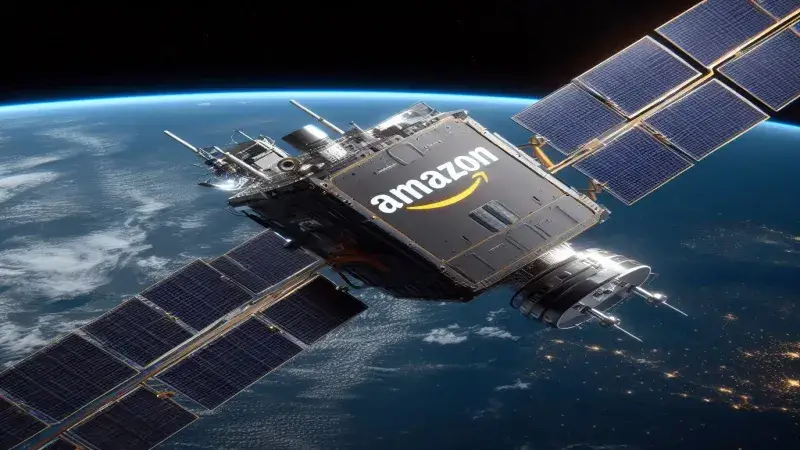Amazon enters the space internet race with SpaceX

Amazon and SpaceX are working on creating two space networks to provide high-speed internet service to the world, using thousands of satellites in low Earth orbit. The Amazon network (Kuiper) and the SpaceX network (Starlink) aim to provide internet service to areas that do not have terrestrial communication options or suffer from poor quality. These projects face various challenges and criticisms, such as cost, coordination, and impact on the space and astronomical environment.
Last Friday, Amazon sent two experimental satellites into space from Florida, USA, which is a first step in implementing its plan to create a space internet network called (Kuiper). Through this step, Amazon aims to test its space technologies before launching thousands of other satellites to provide high-speed and low-cost internet services to customers around the world, especially in communities deprived of digital services.
Amazon allocates ten billion dollars for the Kuiper project, which it announced in 2019, the same year that SpaceX, owned by Elon Musk, started operating its first space vehicles for the Starlink network. SpaceX also aims to provide space internet service to customers around the world, and has started offering its services in some countries since 2019. SpaceX plans to increase the number of its satellites to 12,000 satellites by 2026.
Amazon and SpaceX are working on using thousands of satellites in low Earth orbit, which is an orbit that is between 200 and 2000 kilometers away from the Earth’s surface. These satellites are connected to a network of antennas, fiber optics, and access points on the ground, to provide broadband and low-latency internet. These networks target areas that do not have terrestrial communication options or suffer from poor quality, such as rural areas, islands, and remote areas.
These projects face various challenges and criticisms, such as cost, coordination, and impact on the space and astronomical environment. Launching and maintaining satellites requires large financial, human, and technical resources, and needs coordination with space and regulatory bodies to avoid collisions and interference with other satellites. This type of satellites also raises the concern of scientists and astronomers who fear that it will affect the space environment and the observation of the sky and astronomical phenomena.
In addition, there are some doubts about the quality and stability of the service that these networks will provide, which may be affected by factors such as weather, interference, and delay. These networks may also face competition from other terrestrial communication technologies, such as fiber optics and the fifth generation of mobile phones.
But despite that, these projects represent an opportunity to improve communications and development in the world, and provide internet service to millions of people who do not have it currently. These projects are part of Amazon and SpaceX’s vision to explore space and exploit its resources, which also include sending humans to the moon and Mars. These companies are competing with other companies such as OneWeb, Telesat, ViaSat, and others, which are also working on creating space internet networks. It seems that the space internet race is not over yet, but has just begun.